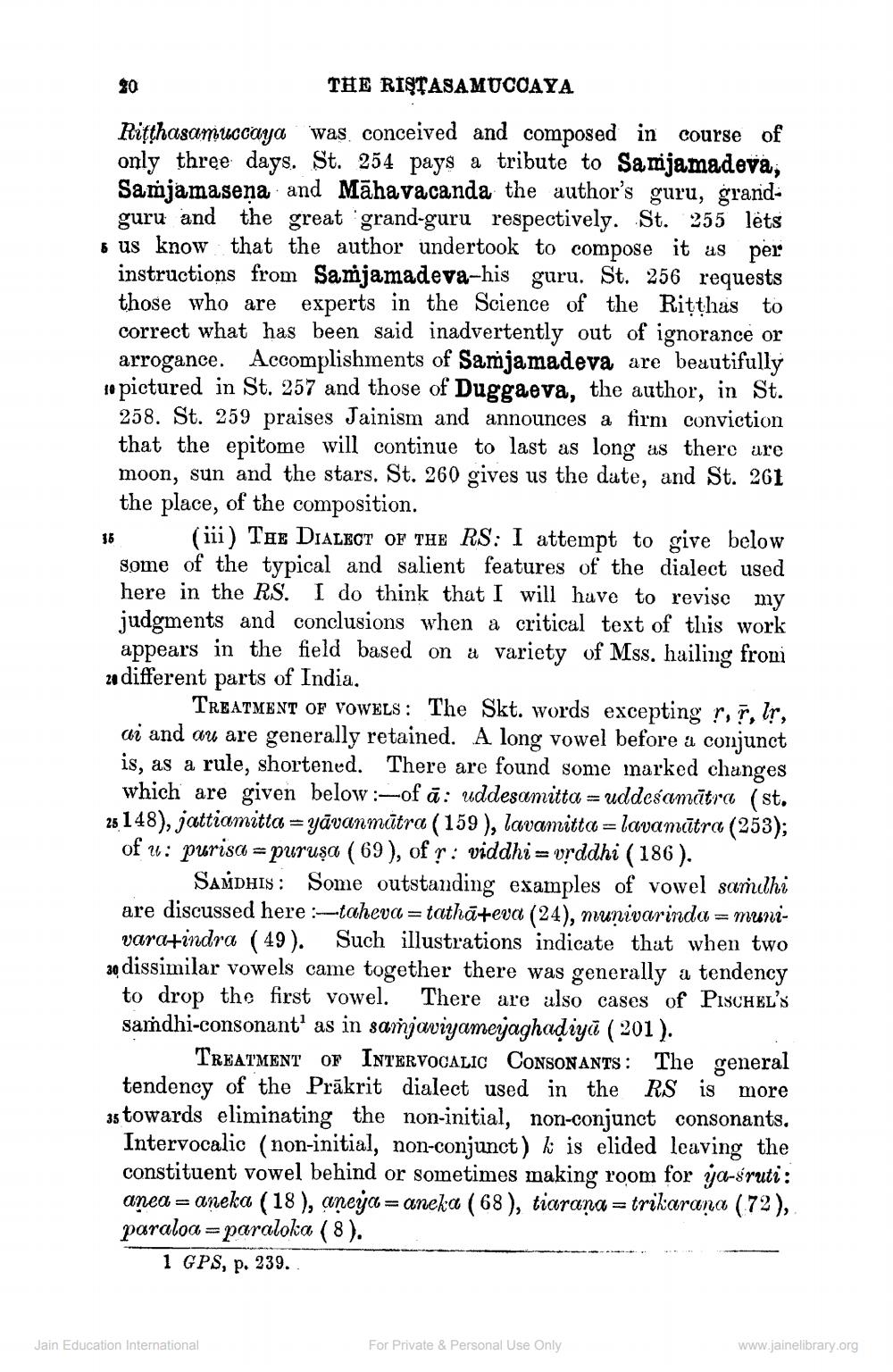________________
THE RISTASAMUCOAYA
Ritthasamuccaya 'was conceived and composed in course of only three days. St. 254 pays a tribute to Samjamadeva, Samjamasena and Māhavacanda the author's guru, grand
guru and the great grand-guru respectively. St. 255 lets s us know that the author undertook to compose it as per
instructions from Samjamadeva-his guru. St. 256 requests those who are experts in the Science of the Ritthas to correct what has been said inadvertently out of ignorance or arrogance. Accomplishments of Samjamadeva are beautifully 1o pictured in St. 257 and those of Duggaeva, the author, in St.
258. St. 259 praises Jainism and announces a firm conviction that the epitome will continue to last as long as there are moon, sun and the stars. St. 260 gives us the date, and St. 261
the place, of the composition. 16 (iii) THE DIALECT OF THE RS: I attempt to give below
some of the typical and salient features of the dialect used here in the RS. I do think that I will have to revise my judgments and conclusions when a critical text of this work
appears in the field based on a variety of Mss. hailing from 20 different parts of India.
TREATMENT OF VOWELS: The Skt. words excepting r, s, lr, ai and au are generally retained. A long vowel before a conjunct is, as a rule, shortened. There are found some marked changes
which are given below :-ofā: uddesamitta = uddesamātra (st. 25 148), jattiamitta=yāvanmātra (159), lavamitta= lavamlītra (253); of u: purisa = puruşa ( 69 ), of ? : viddhi = vrddhi (186).
SAMDHIS: Some outstanding examples of vowel samehi are discussed here :-taheva = tathāteva (24), munivarinda = munivaratindra ( 49). Such illustrations indicate that when two 30 dissimilar vowels came together there was generally a tendency to drop the first vowel. There are also cases of PiSCHEL'S samdhi-consonant' as in samjaviyameijaghadiyū (201).
TREATMENT OF INTERVOCALIC CONSONANTS: The general tendency of the Prākrit dialect used in the RS is more 35 towards eliminating the non-initial, non-conjunct consonants.
Intervocalic (non-initial, non-conjunct) ki is elided leaving the constituent vowel behind or sometimes making room for ja-sruti: anea = aneka (18), aneja = aneka ( 68 ), tiarana = trikarana (72), paraloa = paraloka (8).
1 GPS, p. 239.
Jain Education International
For Private & Personal Use Only
www.jainelibrary.org




